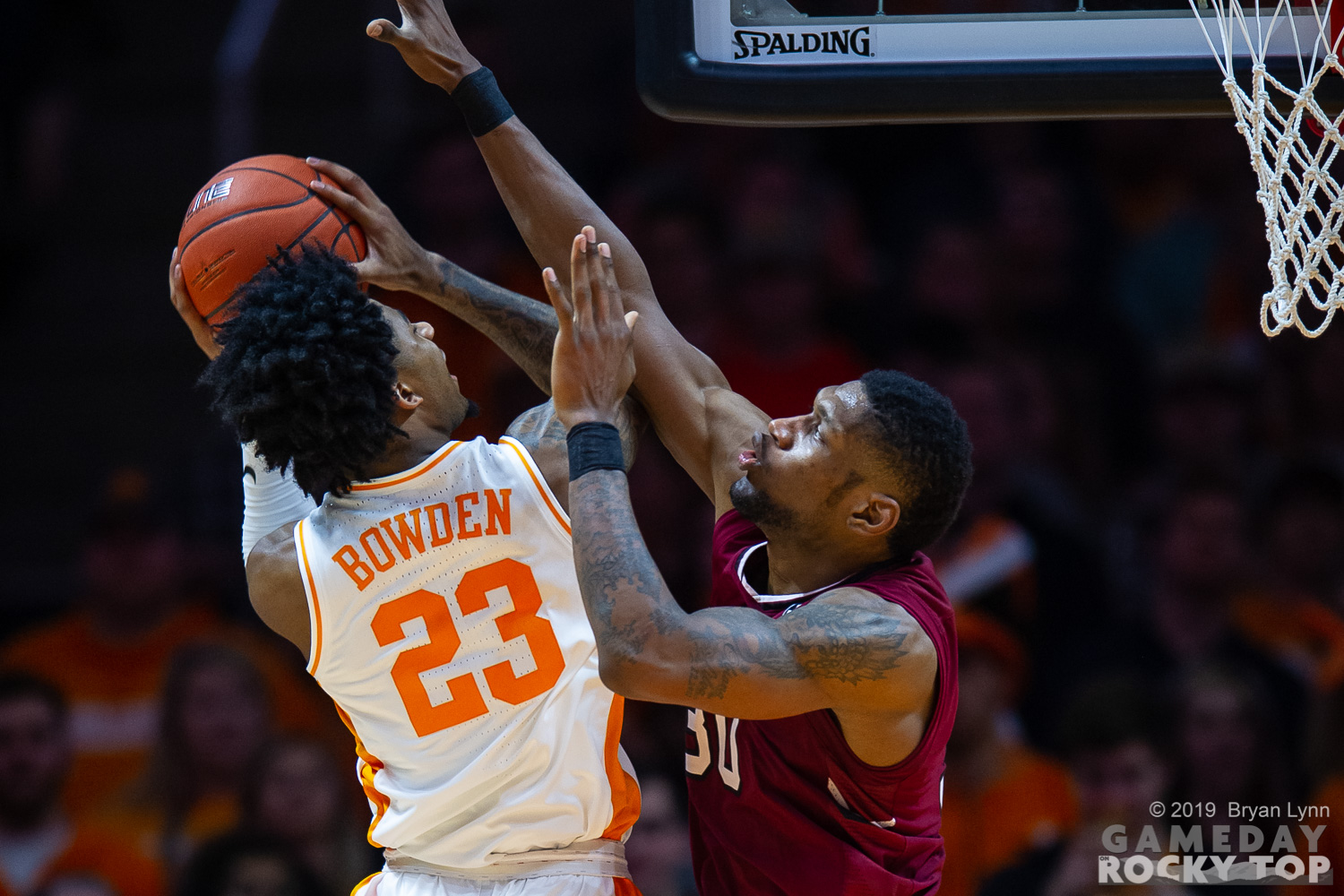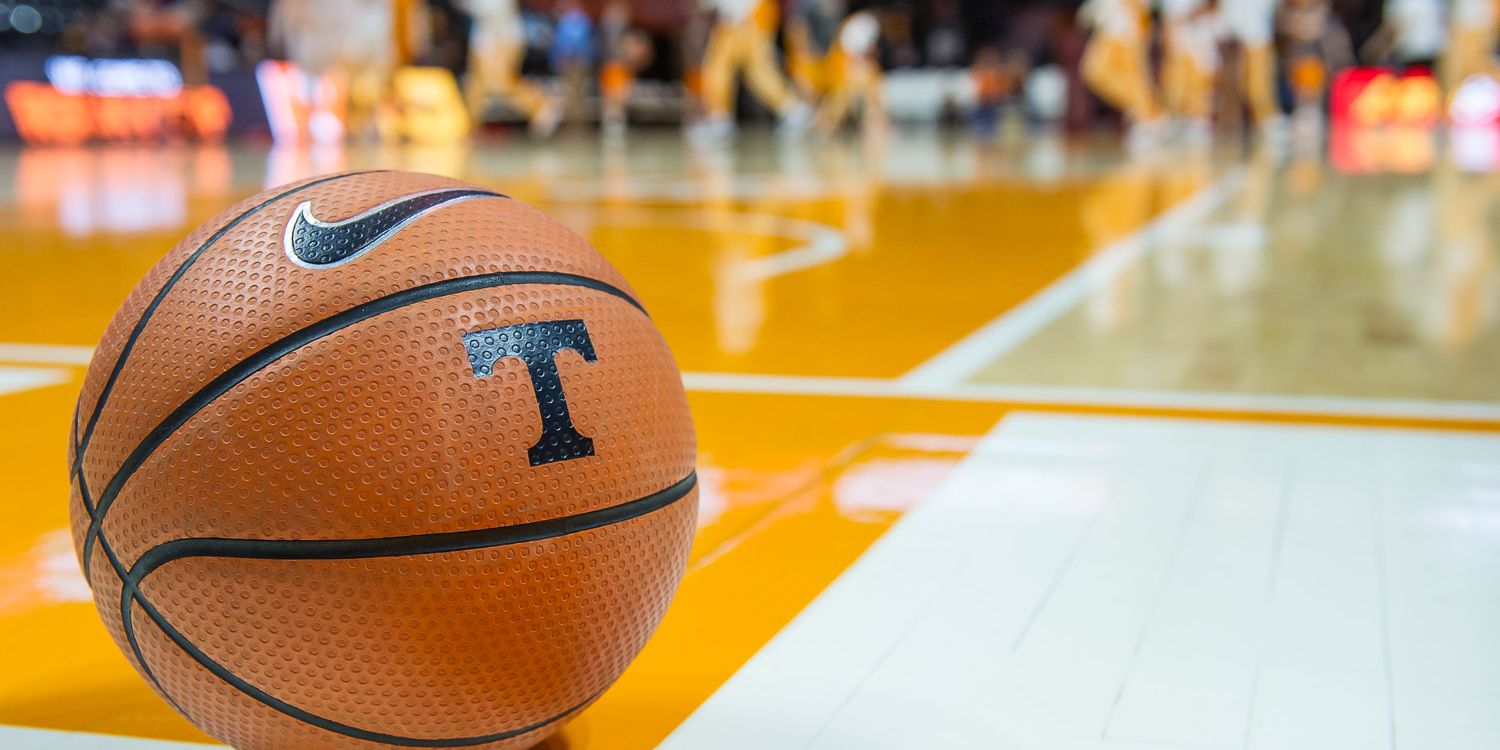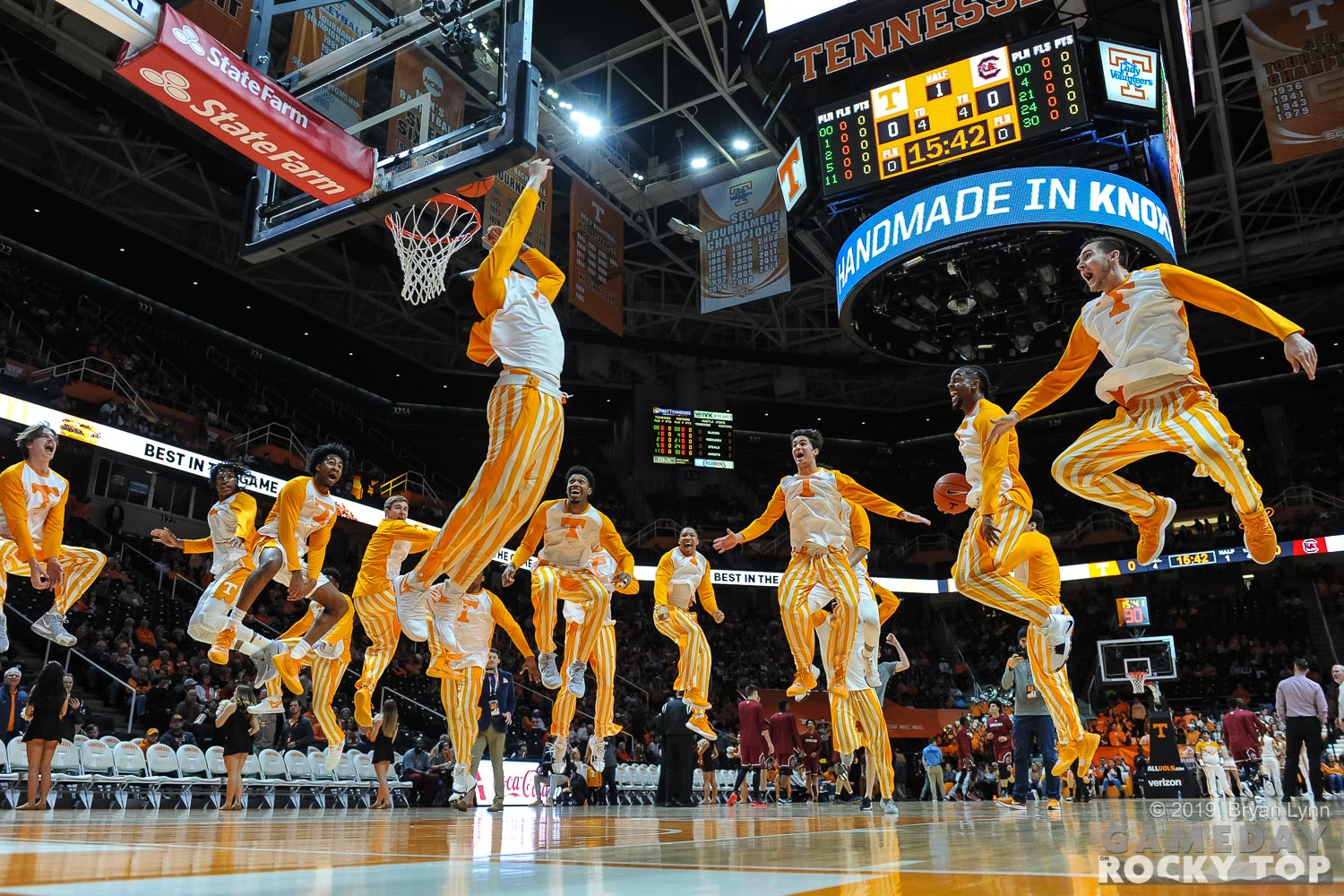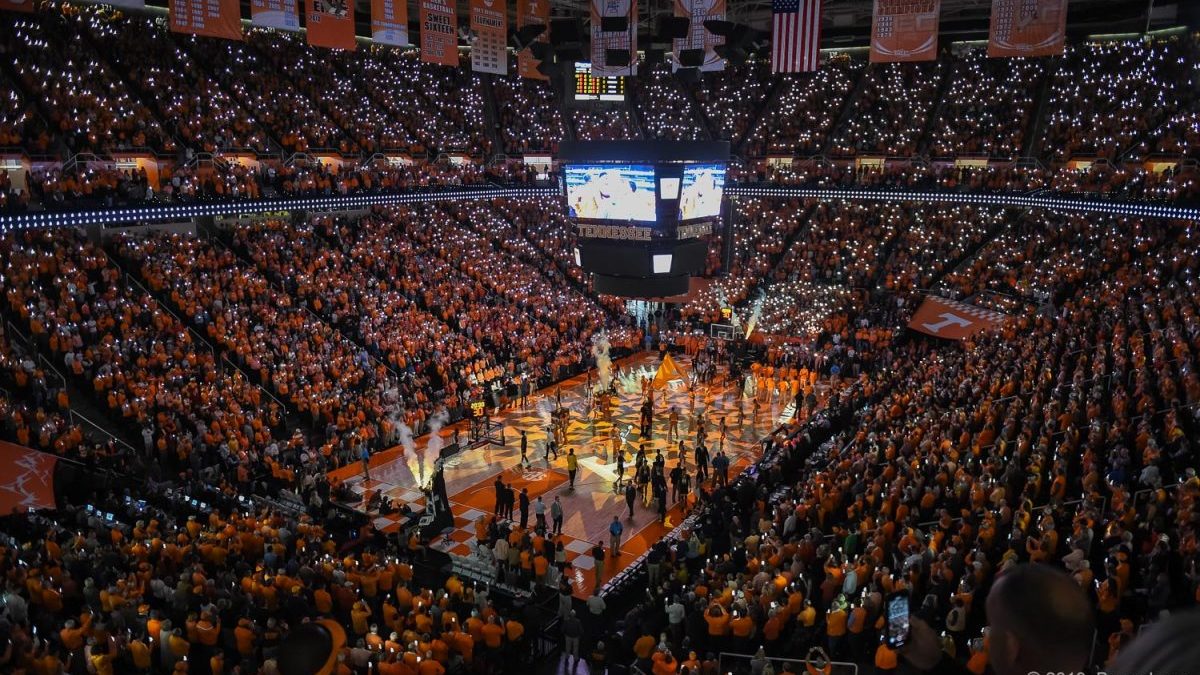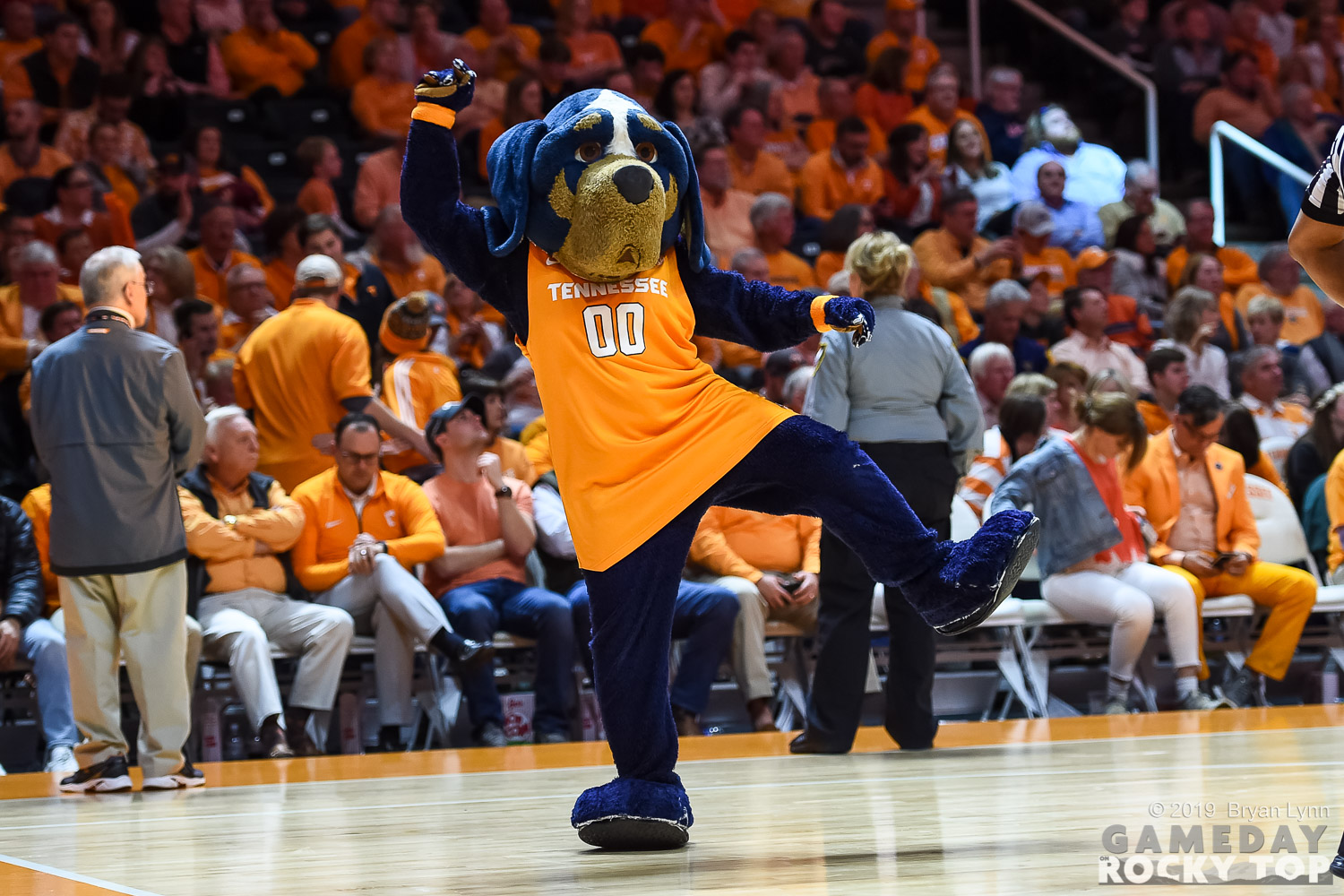Tennessee’s at-the-wire finishes are coming in small bursts this season: two games in Destin against Florida State and VCU, both games against South Carolina, and the win at Alabama. The Vols are 3-2 in those one possession games, which is about what you’d expect; for every, “If we’d only hit a three against Memphis (a four-point loss),” there’s an, “If Lamonte doesn’t hit that shot against VCU…”.
The particular pain of the South Carolina finish was four turnovers in the last two minutes, a game the Vols led by six with 3:40 to play. Of Tennessee’s most painful losses this season, this one felt the most self-inflicted.
The most costly is still Texas A&M. But because the Vols lost that one, losing a game you had won at South Carolina on February 15 certainly feels like the most devastating outcome this season. The Vols are hurting. Are they finished?
Not quite.
Here’s our post from the beginning of the month on the history of the last teams in since tournament expansion. 19-15 remains the historical cut line, a number the Vols can still reach a couple of different ways, and it remains true that three different SEC teams made the field the last three seasons at that mark. The difference this season: the SEC has cannibalized itself.
Last season the SEC had five teams finish in Ken Pomeroy’s Top 25, plus Florida at #26. In 2018 it was four Top 25 teams plus Texas A&M at #29. In 2017 Kentucky and Florida finished in the top five, and South Carolina’s run to the Final Four landed them at #24.
Right now, the SEC leader in KenPom is Kentucky…at 30th. Auburn, LSU, and Florida are all in the 30’s, with Arkansas, Alabama, and Mississippi State in the 40’s and the Vols at 57.
Tennessee’s strength of schedule should still finish strong. Strong enough to feel good about any path to 19 wins? Eh…
So, let’s start here: the first truly must-win game of the season is tonight. Tennessee cannot lose to 1-11 Vanderbilt in Knoxville after already losing to Texas A&M. If that happens, stop reading.
With a win tonight, the Vols would go to 15-11 (7-6) with five games to play: at Auburn, at Arkansas, vs Florida, at Kentucky, vs Auburn. It’s a stout finish with four Quad 1 opportunities. Beat Vanderbilt, and then the conversation becomes about what each of those wins could do for you.
We used Bart Torvik’s predictive bracketology and teamcast to play out multiple scenarios for Tennessee. The idea for this team post-Lamonte has always been to get better as the season went along, with a chance to show that progress at the end. To get back on the bubble, the Vols will either have to do that at the end of the regular season, or at the SEC Tournament in Nashville.
A few scenarios – all of which include beating Vanderbilt – that would get the Vols in the conversation on Selection Sunday:
The Lloyd Christmas: 17-14 with a run to the SEC Tournament Finals
- Tennessee wins its home games (Vanderbilt, Florida, Auburn) and goes 0-3 on the road. The Vols finish the regular season 17-14 (9-9).
- Tennessee wins an 8/9 game in the SEC Tournament, then beats Kentucky on Friday, then beats Florida/Mississippi State/South Carolina on Saturday, then loses a close game to Auburn or LSU in the finals. The Vols are 20-15 on Selection Sunday, picking up three Quad 1 wins in a span of eight days.
- Torvik prediction: First Four Out
The Most Reasonable Path: 18-13 plus two wins in the SEC Tournament
- Tennessee wins its home games (Vandy, Florida, Auburn) and takes advantage of a good match-up against Arkansas again, this time in Fayetteville. The Vols finish the regular season 18-13 (10-8).
- Tennessee wins a 7/10 game in the SEC Tournament, beats either Auburn or LSU on Friday, then loses to the other on Saturday. The Vols are 20-14 on Selection Sunday.
- Torvik prediction: First Four Out
The I Knew They Had It In Them: 19-12 plus no disaster in the SEC Tournament
- Tennessee wins its home games, wins in Fayetteville, and takes advantage of what has been an unusually lucky Auburn team on the road as well. The Vols finish the regular season on a 5-1 spurt, losing only at Rupp, and are 19-12 (11-7).
- If the Vols are a five seed in the SEC Tournament, they beat the 12/13 seed on Thursday.
- Torvik prediction: Dayton (with room for improvement in Nashville)
If we’re courting realism here, the Vols really need to go at least 3-2 in those last five games; if your plan involves a run to the SEC Tournament finals, hey, let’s just win the SEC Tournament. Right now KenPom gives Tennessee 1.96 wins in those last five games. It’ll take an upset and at least one road win.
So we reach a place we found ourselves at the end of what became Cuonzo Martin’s final season: unlikely, but not impossible. Because of Tennessee’s record, we’re also still in the middle ground this team has occupied post-Lamonte: the Vols continue to hang out between 11-13 in KenPom’s efficiency ratings (as in, the Vols would be favored by 11-13 points on a neutral floor against an average team in a game with 100 possessions). Six Tennessee teams have finished between 10.5 and 12.7 in KenPom. Bruce Pearl’s final team made the NCAA Tournament, three others made the NIT, and two – Buzz Peterson’s first team and Rick Barnes’ second – stayed home at .500. There ain’t much space between 18-13 and 16-15. One goes to the SEC Tournament needing a couple of wins to get in the bubble conversation. One goes to the SEC Tournament needing a couple of wins to make the NIT.
And so, 25 games into this season, all the options are still on the table for this team. All roads lead through Vanderbilt tonight. And if they do, we’ll get at least one more week of asking if they have anything more to give.
It’s unlikely. But it’s not impossible. Not yet.
Go Vols.

